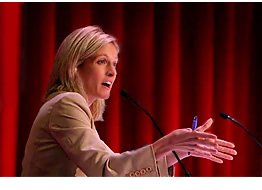At JBC, my consultants and I utilize a wide variety of assessments with our clients, all of which drive out different insights. Depending on what the client is interested in learning about themselves and their teams, we might recommend the HBDI, Tracom, the Thomas Kilman Conflict Instrument - there is a very long list, some of which the coach needs to be certified in, and some not. But most of the time, our interpretation is required in order that clients can understand their results.
But many good assessments are moving online, and are accessible directly by the client themselves. I just took another one, at the suggestion of a client, and enjoyed its unique take on improvement. It's called
StrengthsFinder. Strengthsfinder is a shortened, online equivalent of the work Gallup has been doing in organizations forever, so it's got a lot of meat and research behind it. What's more, I discovered that I am a "WOO" - and if you want to know if you're one too, you'll have to take the assessment!

What's intriguing is its take on the ROI of building on your strengths, instead of trying to remedy your weaknesses. As an individual, I appreciated this, because it is true that we beat ourselves up about what we don't do well, instead of seeking roles, projects, and jobs that play just to our unique strengths. As an entrepreneur, of course my immediate thought is that I'll have to always hire to my weaknesses, or partner strategically to make sure I have a balanced approach to building my business. Easier said than done, but this kind of assessment at least gives you the clarity of where you'll need to complement your yin with someone else's yang.
What's also cool is that you get a development plan that's customized just for you, with suggestions of what you can do tomorrow to play to your strengths. While a coach can truly help you go deeper with findings like these, this is a great, affordable start to building professional self-awareness and making sure you are progressing towards career success with your eyes fully open to what you bring to the table.





